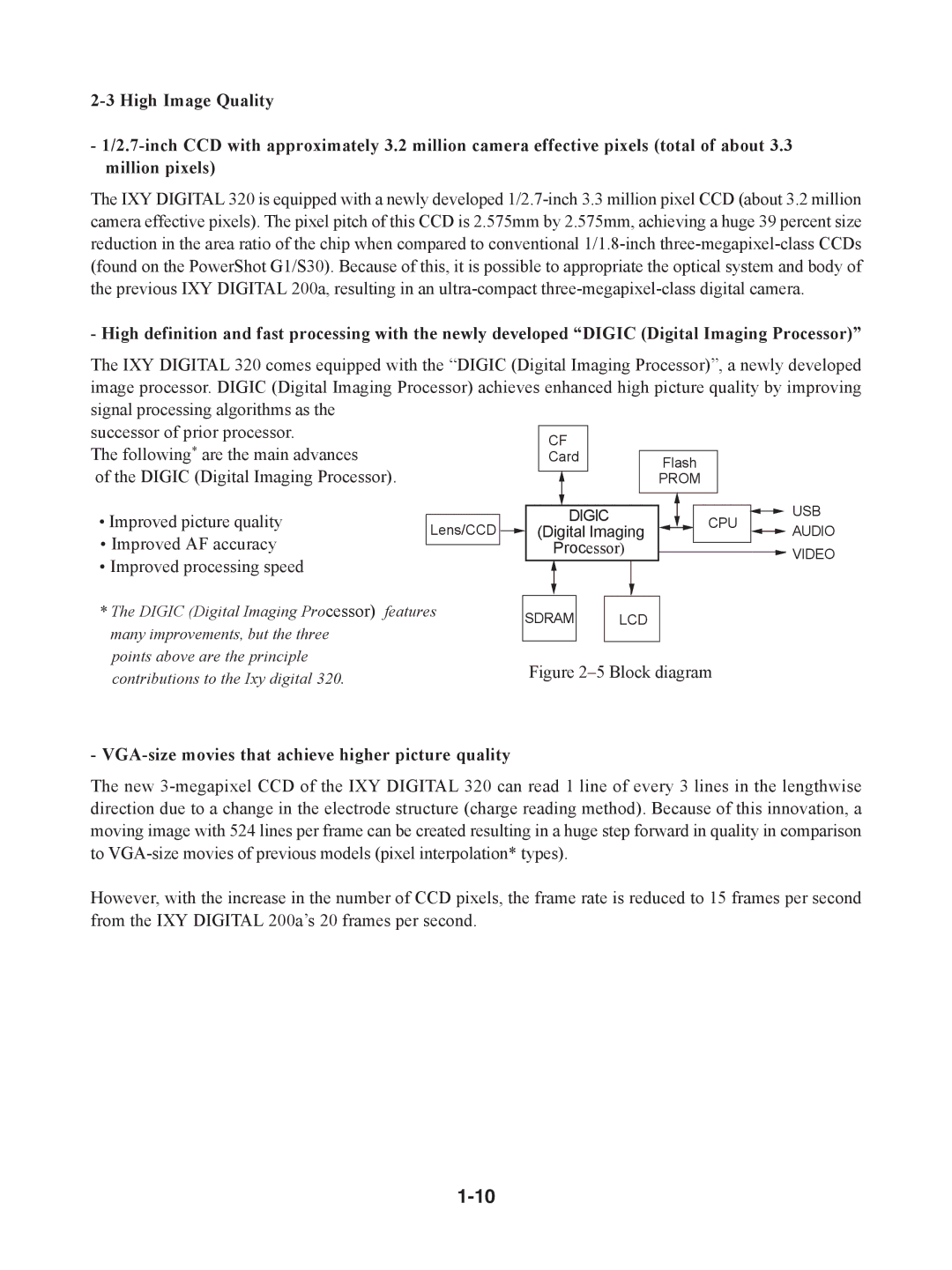
-
The IXY DIGITAL 320 is equipped with a newly developed
- High definition and fast processing with the newly developed “DIGIC (Digital Imaging Processor)”
The IXY DIGITAL 320 comes equipped with the “DIGIC (Digital Imaging Processor)”, a newly developed image processor. DIGIC (Digital Imaging Processor) achieves enhanced high picture quality by improving signal processing algorithms as the
successor of prior processor.
The following* are the main advances
of the DIGIC (Digital Imaging Processor).
•Improved picture quality
•Improved AF accuracy
•Improved processing speed
Lens/CCD ![]()
![]()
![]()
![]() USB
USB
CPU ![]()
![]() AUDIO
AUDIO ![]() VIDEO
VIDEO
*The DIGIC (Digital Imaging Processor) features many improvements, but the three
points above are the principle contributions to the Ixy digital 320.
SDRAM |
| LCD |
|
|
|
Figure 2–5 Block diagram
- VGA-size movies that achieve higher picture quality
The new
However, with the increase in the number of CCD pixels, the frame rate is reduced to 15 frames per second from the IXY DIGITAL 200a’s 20 frames per second.
